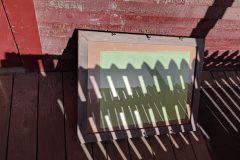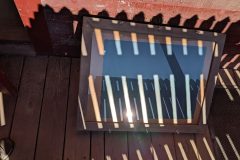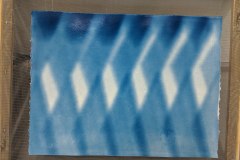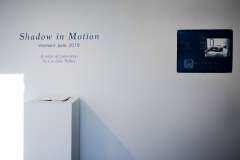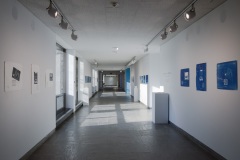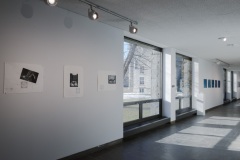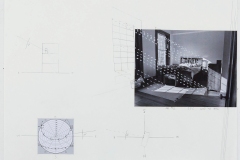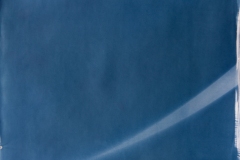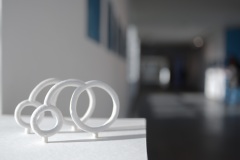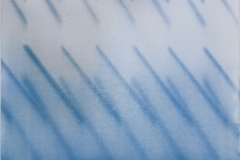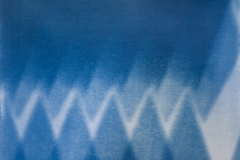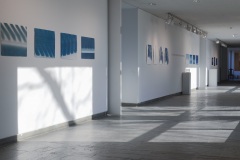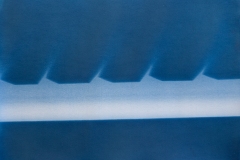The series, Shadow in Motion, is a collection of works I produced in 2019 as artist in residence at the Vermont Studio Center. During the month of June I lived in Johnston, Vermont, on a campus with sixty other artists and writers of all stripes. I had my own studio, access to darkroom facilities and a modest cabin to sleep in. It was a wonderful opportunity to create work in a supportive and immersive environment.
I arrived at the residency planning to work on a series of Sun Calculations. These are the three “blueprints” and their working drawings hung directly across from them in the gallery. The images are calculations of the sun’s location, from where I stood and took the photographs. They illustrate my location on earth relative to the time of the year/day and location (latitude/ longitude) of the sun and it’s azimuth (east and west). Each “blueprint” begins with a drawing. Once I have worked out the calculations, I transcribe them to a digital negative and print with the sun using watercolor paper coated with cyanotype. Cyanotype is a photographic process developed by Willam Hershel in the early 1800’s. It was most notably used by botanist Anna Atkins in 1843 to record algae types. The process was widely used by architects in blueprinting until the 1940’s. The cyanotype process is most fitting to this work since the sun is the driving force behind the images and cyanotypes need sunlight or UV rays to make the exposure.
The other works in this show are the serendipitous result of a mistake mixing cyanotype chemistry. On the first day of the residency I was excited to get started so I quickly mixed my first batch of cyanotype, coated a sheet of watercolor paper, and began printing a Sun Calculation. I unknowingly swapped the measurements of the two ingredients in the cyanotype (ferric ammonium citrate and potassium ferricyanide). The print required an hour of exposure and not the usual fifteen minutes, this left me baffled. Frustrated, I placed my last sheet of cyanotype under the shadow of a fence outside my studio. The result was an image with wonderful geometric shapes and shades of blue. The cyanotype recorded the earth’s rotation in an hour with the fence’s shadow.
Amazed by the results I mixed a fresh batch of cyanotype with the standard ratio, attempted to recreate the first shadow print and the image was completely over exposed (totally blue). At that point, I finally realized I had made a mistake in my first batch. Switching the ratio weakened the sensitivity of the cyanotype, and allowed for longer exposure times. For the following 3 weeks of my residency I experimented with the ratios in the cyanotype mixtures, the type of paper, the objects casting shadows and time of day.
After returning home, I wondered how I could display the cyanotypes and engage the viewer with the process of exposing the Shadow Prints. I decided to make maquette of the objects which cast the shadows. Recognizing the minimal use of material used to make this work, the moquettes are made from water color paper, glue and gesso.
